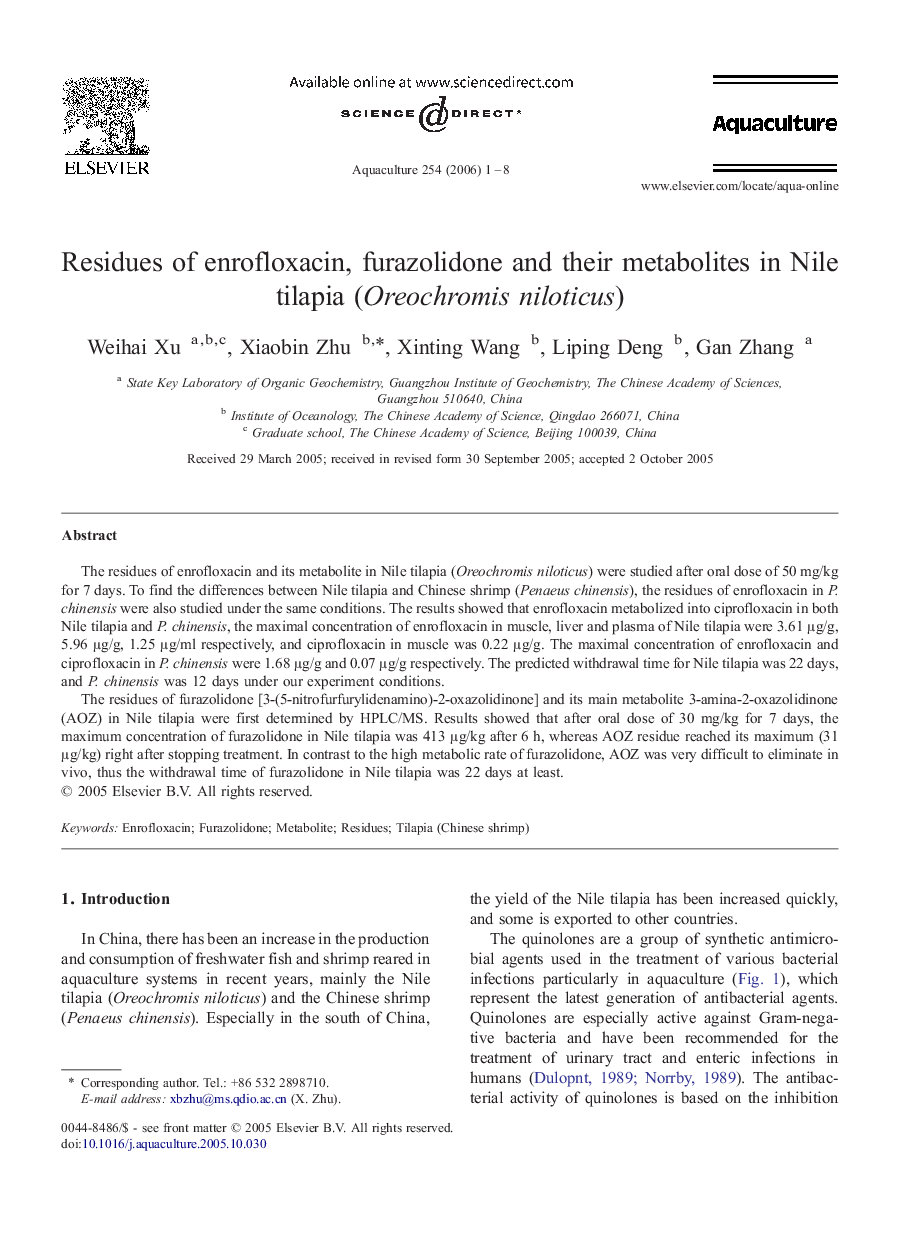| Article ID | Journal | Published Year | Pages | File Type |
|---|---|---|---|---|
| 2425969 | Aquaculture | 2006 | 8 Pages |
The residues of enrofloxacin and its metabolite in Nile tilapia (Oreochromis niloticus) were studied after oral dose of 50 mg/kg for 7 days. To find the differences between Nile tilapia and Chinese shrimp (Penaeus chinensis), the residues of enrofloxacin in P. chinensis were also studied under the same conditions. The results showed that enrofloxacin metabolized into ciprofloxacin in both Nile tilapia and P. chinensis, the maximal concentration of enrofloxacin in muscle, liver and plasma of Nile tilapia were 3.61 μg/g, 5.96 μg/g, 1.25 μg/ml respectively, and ciprofloxacin in muscle was 0.22 μg/g. The maximal concentration of enrofloxacin and ciprofloxacin in P. chinensis were 1.68 μg/g and 0.07 μg/g respectively. The predicted withdrawal time for Nile tilapia was 22 days, and P. chinensis was 12 days under our experiment conditions.The residues of furazolidone [3-(5-nitrofurfurylidenamino)-2-oxazolidinone] and its main metabolite 3-amina-2-oxazolidinone (AOZ) in Nile tilapia were first determined by HPLC/MS. Results showed that after oral dose of 30 mg/kg for 7 days, the maximum concentration of furazolidone in Nile tilapia was 413 μg/kg after 6 h, whereas AOZ residue reached its maximum (31 μg/kg) right after stopping treatment. In contrast to the high metabolic rate of furazolidone, AOZ was very difficult to eliminate in vivo, thus the withdrawal time of furazolidone in Nile tilapia was 22 days at least.
